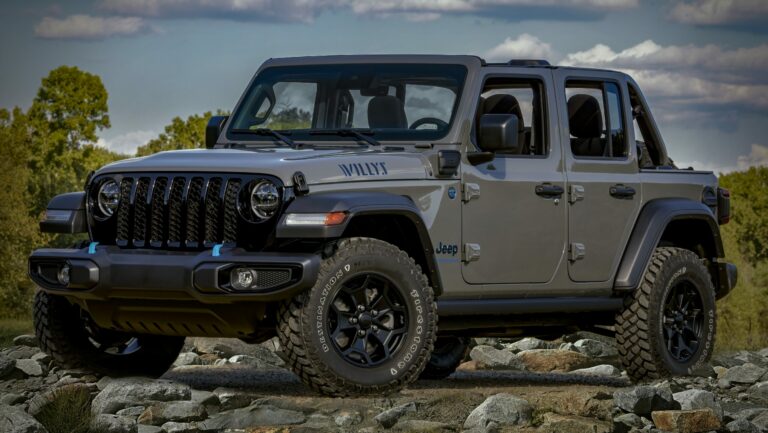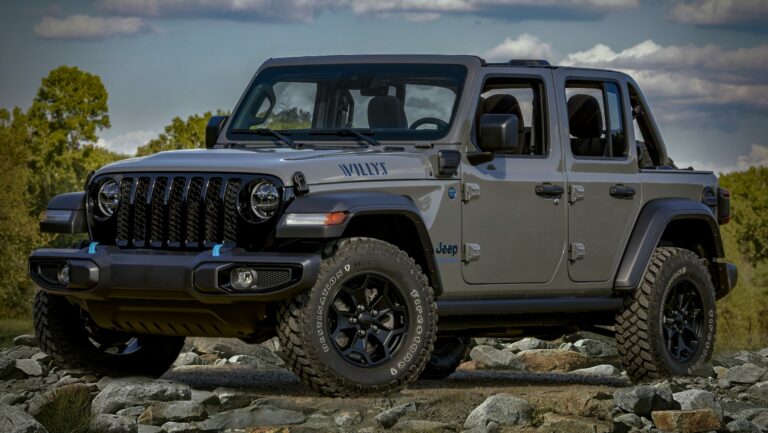84 Jeep CJ7 For Sale: Your Ultimate Guide to Owning an American Icon
84 Jeep CJ7 For Sale: Your Ultimate Guide to Owning an American Icon /jeeps.truckstrend.com
The call of the open road, the allure of untamed trails, and the unmistakable silhouette of an American classic – for many enthusiasts, the 1984 Jeep CJ7 embodies this spirit perfectly. More than just a vehicle, the ’84 CJ7 is a piece of automotive history, a rugged symbol of freedom and adventure. If you’re considering an "84 Jeep CJ7 for sale," you’re not just looking for transportation; you’re seeking a lifestyle, a project, and an investment in an enduring legend. This comprehensive guide will navigate you through everything you need to know about finding, evaluating, and owning one of these iconic machines.
Why the 1984 CJ7 Stands Out
84 Jeep CJ7 For Sale: Your Ultimate Guide to Owning an American Icon
The Jeep CJ (Civilian Jeep) series has a storied past, tracing its lineage directly back to the military Jeeps of World War II. The CJ7, produced from 1976 to 1986, represented a significant evolution in the line, offering a slightly longer wheelbase than its predecessors (the CJ5) for improved stability and comfort, yet retaining the quintessential ruggedness and open-air experience.
The 1984 model year holds particular significance. It was one of the last full model years before the introduction of the Wrangler (YJ) in 1987, making it a highly sought-after "pure" CJ. By ’84, the CJ7 had benefited from years of refinements, including improved axles (like the Dana 30 front and AMC 20 rear, often considered more robust than earlier setups), a Dana 300 transfer case (known for its strength and versatility), and a range of reliable engine options. Its simple, body-on-frame construction and leaf spring suspension make it incredibly durable, easy to work on, and highly customizable. Its timeless design, removable doors, fold-down windshield, and various top options make it a versatile vehicle equally at home on a sandy beach, a rocky trail, or cruising through town on a sunny day.
What to Look For When Buying an ’84 CJ7
Acquiring a vintage vehicle like an ’84 CJ7 requires a keen eye and a thorough inspection. Given their age and intended use, many have led hard lives. Here are the critical areas to scrutinize:
1. The Rust Monster: Your Biggest Foe
Rust is the number one enemy of any classic Jeep. CJ7 frames are particularly susceptible, especially in areas where dirt and moisture accumulate.
- Frame: Inspect the entire frame, paying close attention to the steering box mounting area, spring hanger mounts, skid plate mounts, and crossmembers. Look for rot, cracks, or evidence of poor patch jobs.
- Body: Check floorboards (front and rear), rocker panels, fender wells, tailgate, and the area around the windshield frame. Surface rust is often manageable, but structural rust is a major red flag and costly to repair.

2. Engine and Drivetrain Health
The ’84 CJ7 primarily offered the venerable AMC 4.2L (258 cubic inch) inline-six engine, known for its torque and reliability. Some might have the less common 2.5L four-cylinder, and aftermarket V8 swaps (like the AMC 304 or 360) are also common.
- Engine: Look for oil leaks, listen for unusual noises (knocks, ticks), and check for excessive smoke from the exhaust. Ensure proper fluid levels.
- Transmission: Manual options included the T4 or T5 (4 or 5-speed), while the automatic was typically the robust TF999. Check for smooth shifting, no grinding, and proper engagement of all gears.
- Transfer Case (Dana 300): Engage 4WD high and low to ensure it shifts smoothly and holds. Listen for grinding or clunking.
- Axles (Dana 30 front, AMC 20 rear): Check for leaks around the differential covers and axle shafts. Listen for whining noises during a test drive, which could indicate worn gears or bearings.
3. Suspension and Steering
These components are crucial for ride quality and safety.
- Leaf Springs & Shocks: Look for saggy springs, broken leaves, or leaky shocks.
- Bushings: Inspect all bushings (shackle, spring, control arm) for cracking or deterioration.
- Steering: Check for excessive play in the steering wheel. This could indicate worn tie rod ends, drag link, steering box, or a loose steering shaft.
4. Electrical System
Old wiring can be a headache.
- Lights & Gauges: Test all lights (headlights, brake, turn signals) and ensure all dashboard gauges are functional.
- Wiring: Look for frayed, spliced, or poorly insulated wires, especially near the battery and engine bay.
5. Interior and Top
The interior of a CJ7 is utilitarian but should be functional.
- Seats: Check for tears, broken frames, or missing foam.
- Dashboard: Ensure it’s not cracked excessively and that all switches work.
- Top: Assess the condition of the hardtop or soft top. Leaks are common but can be addressed.
6. Modifications
Many CJ7s have been modified. Assess the quality of any aftermarket lifts, engine swaps, or other additions. A poorly executed lift can lead to driveline vibrations or unsafe handling. A professional, well-documented swap can add value, but a shoddy one will subtract.
The Buying Process: Tips for a Successful Purchase
- Research Market Value: Look at similar models on various platforms to understand the current price range based on condition, mileage, and modifications.
- Pre-Purchase Inspection (PPI): If you’re not a seasoned mechanic, invest in a PPI by a reputable Jeep specialist. They can identify issues you might miss and provide an estimate for repairs.
- Test Drive: Don’t just drive around the block. Take it on varied terrain if possible. Test 4WD. Listen for noises, feel for vibrations, and assess braking performance.
- Ask Questions: Inquire about maintenance history, previous accidents, and reasons for selling.
- Documentation: Ensure the title is clear and matches the VIN on the vehicle. Any service records are a bonus.
- Where to Look:
- Online Marketplaces: Craigslist, Facebook Marketplace, eBay Motors.
- Specialty Auction Sites: Bring a Trailer, Cars & Bids (often feature higher-end or unique builds).
- Forums & Clubs: Jeep forums often have classified sections where enthusiasts sell well-maintained vehicles.
- Classic Car Dealers: May offer restored or well-preserved examples, usually at a premium.
Common Upgrades and Customization
One of the greatest appeals of the CJ7 is its modularity and the vast aftermarket support.
- Suspension Lifts: Enhance off-road capability and allow for larger tires.
- Engine Swaps: For more power, many opt for V8 engines or modern fuel-injected inline-sixes.
- Axle Upgrades: Stronger axles like Dana 44s or Ford 9-inch can handle larger tires and more extreme off-roading.
- Tires and Wheels: A wide variety of options to improve traction and aesthetics.
- Interior Enhancements: Aftermarket seats, updated sound systems, and console upgrades improve comfort.
- Exterior Accessories: Winches, heavy-duty bumpers, rock sliders, and LED lighting enhance utility and protection.
Be aware that significant modifications, while potentially improving performance, can also affect the vehicle’s originality and, in some cases, its long-term value to collectors.
Potential Challenges and Solutions
Owning a vintage Jeep comes with its quirks, but understanding them prepares you.
- Rust Repair: If you find significant rust, budget for professional welding and bodywork. It’s often the most expensive repair.
- Parts Availability: While many parts are readily available due to the CJ7’s popularity and aftermarket support, specific OEM components can be harder to source. Online retailers and specialist Jeep parts suppliers are your best friends.
- Fuel Efficiency: Don’t expect Prius-level MPG. The 4.2L engine, especially with larger tires and lift, is thirsty.
- Ride Quality: It’s a leaf-sprung, solid-axle vehicle. The ride will be firm and bouncy, not smooth like a modern SUV. This is part of its charm!
- Maintenance: Older vehicles require more consistent attention. Being handy with a wrench will save you money.
- Insurance: Consider classic car insurance, which often offers better rates and agreed-upon value coverage for vintage vehicles.
84 Jeep CJ7 For Sale: Price Guide
The price of an ’84 Jeep CJ7 can vary wildly based on condition, originality, modifications, and geographical location. This table provides a general range:
| Condition Category | Description | Estimated Price Range (USD) |
|---|---|---|
| Poor/Project | Heavily rusted frame and body, non-running engine, major mechanical issues, incomplete. Requires extensive restoration. | $3,000 – $7,000 |
| Fair | Running and driving, but with significant rust (body or frame), obvious mechanical issues needing repair, worn interior, rough paint. Usable but needs substantial work. | $7,000 – $12,000 |
| Good | Minimal rust (mostly surface), running well with no major mechanical issues, presentable interior, decent paint. Might have some minor modifications or need minor cosmetic attention. A solid driver. | $12,000 – $25,000 |
| Excellent | Very little to no rust, strong running engine and drivetrain, clean interior, good quality paint. Might be an older restoration or a very well-preserved original. Everything functions as it should. Minor, tasteful modifications may be present. | $25,000 – $40,000 |
| Concours/Restored | Professionally restored to original or better-than-new condition, or an exceptionally low-mileage, perfectly preserved original. Show-quality paint, spotless interior, all systems fully functional. Often commands top dollar at specialized auctions. | $40,000 – $70,000+ |
Note: These are general estimates. Highly desirable factory options (e.g., V8 engines, specific trim packages like the Laredo or Renegade) or exceptionally well-executed custom builds can push prices higher. Location and market demand also play a significant role.
Frequently Asked Questions (FAQ)
Q1: Is the 1984 CJ7 a good investment?
A1: Yes, well-maintained or properly restored CJ7s, especially from desirable later years like ’84, have shown consistent appreciation in value, particularly for models with good documentation and minimal rust. They are considered collectible classics.
Q2: What are the most common rust spots on a CJ7?
A2: The frame (especially around the steering box, spring hangers, and skid plate mounts), floorboards, rocker panels, rear quarter panels, and the area around the windshield frame are primary rust areas.
Q3: Are parts readily available for an ’84 CJ7?
A3: Generally, yes. Thanks to its popularity and the robust aftermarket industry, most mechanical and body parts are available new or used. Specific OEM parts might require more searching, but common wear items are easy to find.
Q4: What engine options were available in 1984 CJ7s?
A4: The primary engine was the AMC 4.2L (258 cubic inch) inline-six. A 2.5L four-cylinder was also available. V8 engines (like the AMC 304/360) were not factory options for 1984 but are common aftermarket swaps.
Q5: Can an ’84 CJ7 be a daily driver?
A5: While technically possible, it’s not ideal for most people. CJ7s lack modern safety features, comfort, and fuel efficiency. They are best suited as weekend cruisers, off-road toys, or secondary vehicles, unless significantly modernized with upgrades.
Conclusion
The 1984 Jeep CJ7 is more than just a classic SUV; it’s a statement, a testament to American ingenuity and a symbol of rugged individualism. For those seeking an authentic open-air driving experience combined with formidable off-road prowess, the ’84 CJ7 remains an unparalleled choice. While acquiring one demands careful inspection and a realistic understanding of its vintage characteristics, the rewards of ownership—from the admiring glances to the unforgettable adventures—are truly immeasurable. With the right research and a bit of patience, finding that perfect "84 Jeep CJ7 for sale" can lead you to the vehicle of your dreams and a lifetime of iconic motoring.



